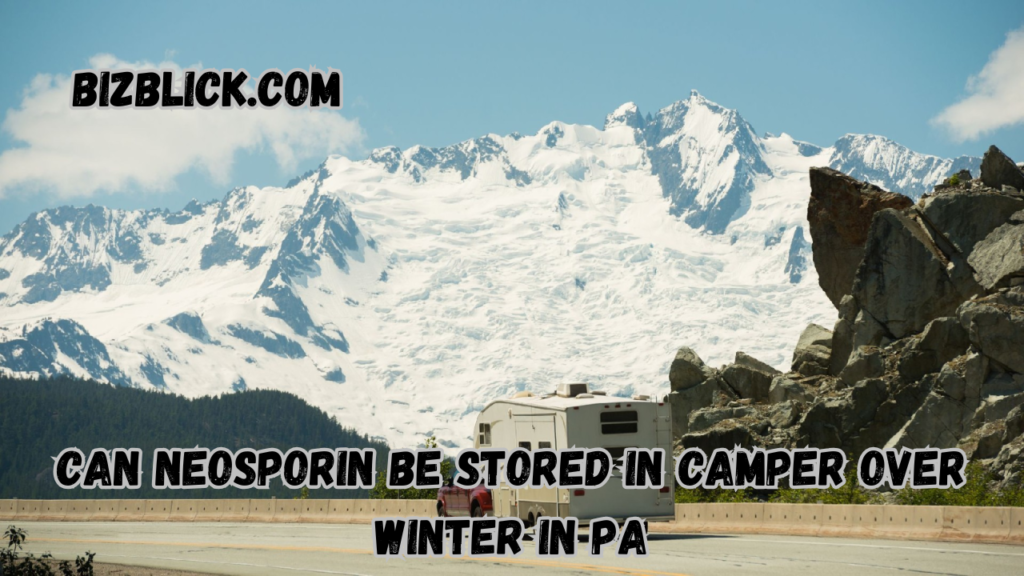When it comes to can neosporin be stored in camper over winter in pa storing medications and first aid supplies in a camper over the winter, there are several factors to consider. This includes temperature fluctuations, the nature of the medication, and the conditions inside the camper. One of the common questions asked by campers in colder regions, such as Pennsylvania, is whether Neosporin, an over-the-counter antibiotic ointment, can be safely stored during the winter months.
In this article, we will explore the various considerations for storing Neosporin in a camper during the cold winter months, especially in a state like Pennsylvania, where temperatures can dip well below freezing.
What Is Neosporin?
Neosporin is a brand name for a topical ointment that combines three active ingredients: neomycin sulfate, polymyxin B sulfate, and bacitracin zinc. It is commonly used to prevent infection in minor cuts, scrapes, and burns. As a popular first aid ointment, Neosporin can be a critical part of any emergency kit, especially in a camper, where outdoor activities and minor injuries may occur.
Temperature Sensitivity of Neosporin
Neosporin, like many other topical medications, is best stored at room temperature. The manufacturer of Neosporin typically recommends keeping the ointment at temperatures between 59°F (15°C) and 86°F (30°C). Storing it outside of this range, especially at extreme temperatures, can impact its effectiveness.
Can Neosporin Be Stored in a Camper in Pennsylvania Over Winter?
1. Freezing Temperatures:
Winter in Pennsylvania can be harsh, with temperatures frequently dipping below freezing. If you are storing Neosporin in a camper, it’s important to be aware of the possibility of freezing temperatures. When Neosporin freezes, it could alter its chemical composition or cause the ingredients to separate, potentially rendering the product less effective or even unsafe to use.
While the Neosporin container itself is typically designed to withstand temperature changes, freezing and thawing cycles can damage the ointment inside. In freezing conditions, the ointment may solidify, making it difficult to apply, and it may not deliver the intended therapeutic effects when needed.
2. Fluctuating Temperatures:
Camper interiors can experience dramatic temperature fluctuations. During the day, the camper may warm up with sunlight or a space heater, but at night, it can become very cold again. These extreme changes could cause the ointment to go through multiple cycles of freezing and thawing, potentially damaging its consistency, texture, and potency.
In addition to freezing temperatures, high heat inside a camper, especially when parked in direct sunlight, can also degrade the quality of Neosporin. The ointment may become too runny or lose its effectiveness.
3. Humidity and Condensation:
Humidity is another factor to consider when storing Neosporin in a camper. The camper may experience condensation when transitioning between cold and warm temperatures, leading to moisture buildup. Excess moisture can seep into the packaging and potentially affect the ointment’s quality, leading to contamination.
Best Practices for Storing Neosporin in a Camper Over Winter
If you are planning to store Neosporin in a camper over the winter in Pennsylvania, it is essential to take precautions to ensure the product remains effective. Here are some tips for proper storage:
1. Store in a Temperature-Stable Location:
Find a location inside the camper that is not subject to extreme temperature fluctuations. Avoid storing Neosporin in places near windows, exterior walls, or vents where temperatures may vary greatly. Instead, store it in a cabinet or drawer that is insulated from the outside elements and less likely to freeze or heat up.
2. Use Insulated Containers:
Consider placing your Neosporin tube in an insulated container or a small cooler. These containers can help protect the ointment from extreme temperatures and prevent it from freezing or becoming too warm.
3. Monitor Temperature:
If possible, use a thermometer to monitor the interior temperature of your camper. This will give you a sense of whether the temperature is staying within the recommended range for storing medications. You may also want to invest in a small portable heater or insulation for your camper to keep it warmer during extreme cold spells.
4. Consider Bringing It Inside During Extreme Cold:
If the temperatures are expected to drop well below freezing for an extended period, consider bringing your Neosporin inside your home to avoid exposure to freezing conditions. Storing it inside will ensure that it remains in optimal condition and maintains its effectiveness.
5. Check for Changes in Appearance or Texture:
Before using Neosporin stored in a camper over the winter, inspect the product for any changes in color, texture, or consistency. If the ointment has separated, become grainy, or is difficult to apply, it may no longer be effective and should be replaced.
Conclusion
While Neosporin is a durable and widely used first aid product, storing it in a camper over the winter in Pennsylvania comes with some risks. Freezing temperatures, fluctuating heat, and moisture can all impact the effectiveness and safety of the ointment. To ensure that your Neosporin remains in good condition, it is best to store it in a temperature-stable location inside your camper, monitor the temperature, or bring it inside during extreme cold. By following these precautions, you can ensure that your first aid supplies, including Neosporin, remain ready for use when needed.
